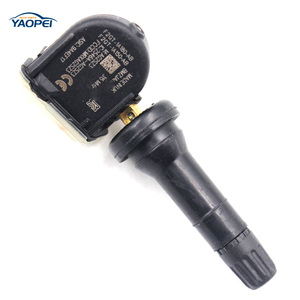(562 products available)



















































































































































































All-season tires:
For the Ford Mustang, all-season tires are a flexible choice. They are made to handle a variety of road and weather conditions. They perform well in dry, damp, and light snowy conditions. They have a tread design that gives gripping and stability, which makes them good for everyday driving. While all-season tires have a longer lifespan, their performance may not be as good as summer tires. Their average lifespan is between 40,000 and 60,000 miles, depending on driving habits and maintenance. These tires are a popular choice for Mustangs due to their longevity and adaptability.
Summer tires:
Summer tires provide Mustangs with superb performance, particularly during the warmer months. They are built with softer rubber compositions and distinctive tread patterns that provide excellent grip on dry and wet surfaces. They are ideal for high-speed stability, cornering grip, and braking performance. Sports cars like the Mustang use summer tires because of their superior performance. Nevertheless, summer tires can only be used in mild climates or when the temperature is consistently above 45°F (7°C) because their rubber compound hardens and loses grip on cold, damp roads.
Performance tires:
Performance tires are intended for high-performance vehicles, including the Ford Mustang. They have a tread design that grips the road firmly and a rubber combination that provides superior traction and handling at high speeds. Mustangs with performance tires can handle tight corners and sudden stops with ease, making them great for track days and spirited driving. While performance tires provide superior performance, they wear out faster than all-season tires. Their average lifespan is between 20,000 and 40,000 miles, depending on the type of driving and the tire's particular qualities.
Off-road tires:
The off-road tire is built for rough terrain and consists of strong rubber. They are built for the Ford Mustang's off-road variants, such as the Mustang Mach-E Rally. Off-road tires have deep treads that provide excellent grip on loose surfaces like mud, sand, and gravel. They also have reinforced sidewalls that resist punctures and cuts. Off-road tires provide great traction and durability, which improves the vehicle's ability to navigate challenging terrain. However, off-road tires sacrifice on-road performance and noise comfort, and they tend to be louder.
Here's a breakdown of the key specifications of Mustang tires:
Tire size
Tire size is the number that appears on the sidewall of the tire. For example, 245/45R18. The first number, 245, refers to the width of the tire in millimeters. The 45 is the aspect ratio, which means the height of the sidewall is 45% of the tire's width. The 18 at the end of the number is the diameter of the wheel in inches. Tire sizes differ by make and model, so check the owner's manual for the correct size. As a general rule, tires that are too wide or too narrow can affect the handling and performance of the Mustang.
Load rating
The load rating is a number that corresponds to the maximum weight a tire can support. For example, a tire with a load rating of 94 can handle 1,477 pounds. The load rating is important for the Mustang because it ensures the tires can support the vehicle's weight, especially when hauling or towing.
Speed rating
The speed rating is a letter that indicates the maximum speed a tire can maintain. For example, tires with a speed rating of ZR can reach speeds over 149 mph. Speed ratings are also essential for the Mustang, as they ensure the tires can keep up with the vehicle's performance.
Tread design
Tread design is also important for Mustangs. Those with performance needs have a tread design optimized for dry and wet traction, while all-season tires have a more versatile tread design.
Follow these tips to keep Mustang tires in good condition:
Choosing the right tires for a Mustang can be challenging. With so many options and factors to consider, it is understandable. It is worth noting that tires are crucial parts of vehicles. They determine the kind of experience one gets while driving. Here are some tips for choosing tires for a Mustang:
Changing a tire is a straightforward process that can be done with basic tools. Here's a step-by-step guide:
Tools needed:
Step-by-step guide:
Q: Can any tire fit on a Mustang?
A: No, not all tires can fit a Mustang. However, it is possible to use tires from other车型 (car models) as长 (long) as they are适合 (suitable) and compatible with the车 (vehicle). The轮胎 (tires) should be具体 (specific) to the Mustang's车轮 (wheel)尺寸 (size) and规格 (specifications) to ensure适当 (proper)拟合 (fit) and性能 (performance).
Q: How many miles can a Mustang tire last?
A: Mustang tires can last between 25,000 to 60,000 miles. However,这 (this) is an估计 (estimate)范围 (range) and可以 (can) vary based on多种 (multiple)因素 (factors) such as the类型 (type) of轮胎 (tire),驾驶习惯 (driving habits),道路条件 (road conditions), and必须 (Mustang)型号 (model)特征 (features). Different types of Mustangs have不同 (different)特点 (characteristics) that影响 (influence) how the tires wear and performance.
Q: How often should tires be rotated on a Mustang?
A: On a Mustang,轮胎 (tire)旋转 (rotation) is usually recommended every 5,000 to 7,500 miles or每个 (every)其他 (other)常规 (regular)维护 (maintenance)服务 (service). This ensures even磨损 (wear) of the轮胎 (tires) and optimizes其 (their)性能 (performance).
Q: Can larger tires increase horsepower on a Mustang?
A: No, larger tires不能 (cannot) increase马 (horsepower) on a Mustang. However,它们 (they) can影响 (can influence) traction,扭矩 (torque), and overall车辆 (vehicle)性能 (performance). Larger tires may提供 (provide)更 (more)牵引力 (traction) and更 (more) torque, which可以 (can) be beneficial for某些 (certain)用途 (uses)或 (or) driving条件 (conditions). They may also提高 (increase)车辆 (vehicle)清晰度 (clearance) and reduce轮胎 (tire)更换 (replacement)频率 (frequency).